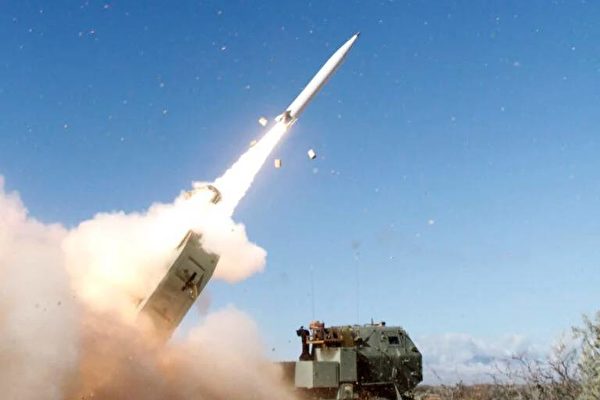During the “Brave Shield 24” exercise, the United States Army successfully used two new type of precision strike missiles (PrSM) to hit moving targets in the Pacific Ocean. The Army stated that the recent attack marked an “important milestone” in the development of PrSM, making the U.S. Army a formidable force against the Chinese Communist Party (CCP) in the Indo-Pacific region.
PrSM is a next-generation long-range precision strike weapon designed to replace the older MGM-140 Army Tactical Missile System (ATACMS) and fill capabilities gaps in other weapons. The Army noted that the recent test targeting moving maritime targets was a significant step forward in the missile program.
The U.S. Army announced the test exercise last Friday (June 21), stating that soldiers conducted the test launch on June 16 in Palau. The exercise involved the Army’s prototype Autonomous Multi-Domain Launcher and two precision strike missiles, which “can engage moving maritime targets in conjunction with other joint assets.”
The prototype launcher is expected to be capable of performing escort operations, autonomous route-point navigation, remote operations, and remote launcher turret and fire control operations.
This test took place during the “Brave Shield 2024” participating units’ Sink Exercise (SINKEX) where joint forces sunk the decommissioned USS Cleveland wreckage, an Austin-class amphibious transport dock, located more than 40 nautical miles off the North Pacific coast. However, the Army did not specify the missile test’s target in the press release.
The use of PrSM in this exercise marked the first time such missiles were employed in targeting moving maritime targets, as well as the first time the Autonomous Multi-Domain Launcher and the new missile were used outside the United States.
PrSM, developed by Lockheed Martin Corporation, has been in development for years to provide the Army with long-range support and deep strike capabilities. Lockheed Martin stated that the missile can engage targets at distances ranging from approximately 40 to over 300 miles, significantly surpassing the range of traditional ATACMS.
The Army stated that the new PrSM will significantly enhance the U.S. military’s long-range precision-guided munitions in terms of “range and lethality.”
The ballistic missile is capable of carrying out missions in all weather conditions and is intended to replace the single and clustered versions of ATACMS. Additionally, due to the smaller size of PrSM, the launchers can carry two missiles instead of one.
According to documents from the Pentagon’s Test and Evaluation Office regarding the program, future variants of PrSM “will focus on increasing range and strike capabilities against time-sensitive, mobile, hardened, and fleeting targets.”
As early as November 2023, the Army successfully test-fired the baseline variant of the missile, known as Increment 1, from the M142 High Mobility Artillery Rocket System (HIMARS), demonstrating successful target hits. Following the demonstration test, the Army received these missiles for the first time in December 2023.
Doug Bush, the Assistant Secretary of the Army for Acquisition, Logistics, and Technology, stated in a release at the time, “The rapid development and delivery of this capability is a prime example of the Army proactively leveraging new acquisition authorities from Congress which enable us to provide improved equipment to our soldiers at a faster pace.”
In January 2024, the Army announced successful flight tests of the guidance head, enabling PrSM to engage warships and moving targets.
In an earlier statement in January, the Army mentioned that the new missile successfully conducted flight tests against Land-Based Anti-Ship Missiles (LBASM) multi-mode guidance head technology integrated into PrSM. Increment II PrSM aims to provide an anti-ship option.
Given recent events involving the Houthi armed group and concerns about major power competition in the Indo-Pacific region, anti-ship capabilities have become increasingly crucial. Especially with the Chinese Communist Party actively developing various anti-ship ballistic and cruise missiles, the U.S. is increasingly aware of the need to enhance their anti-ship capabilities.
PrSM has the ability to strike threat air defense systems, missile launchers, command and control (C2) nodes, force assembly/assembly areas, and high-value targets.
According to the Pentagon’s plans, PrSM missiles will undergo various performance upgrades in the future. One variant, known as Increment 4, is considered by the U.S. Army as a major asset for the first island chain guerrilla warfare. This type of missile offers the advantage of extending its range to about 1000 kilometers and second-stage utilization of a ramjet engine, enabling the U.S. Army to pose a deterrent threat to mainland China from Japan, Korea, and even the Philippines, while being able to strike moving targets.
If the Increment 4 variant is mass-produced, in the event of a U.S.-China conflict erupting in the Indo-Pacific, the U.S. Army will become a force that cannot be ignored.

